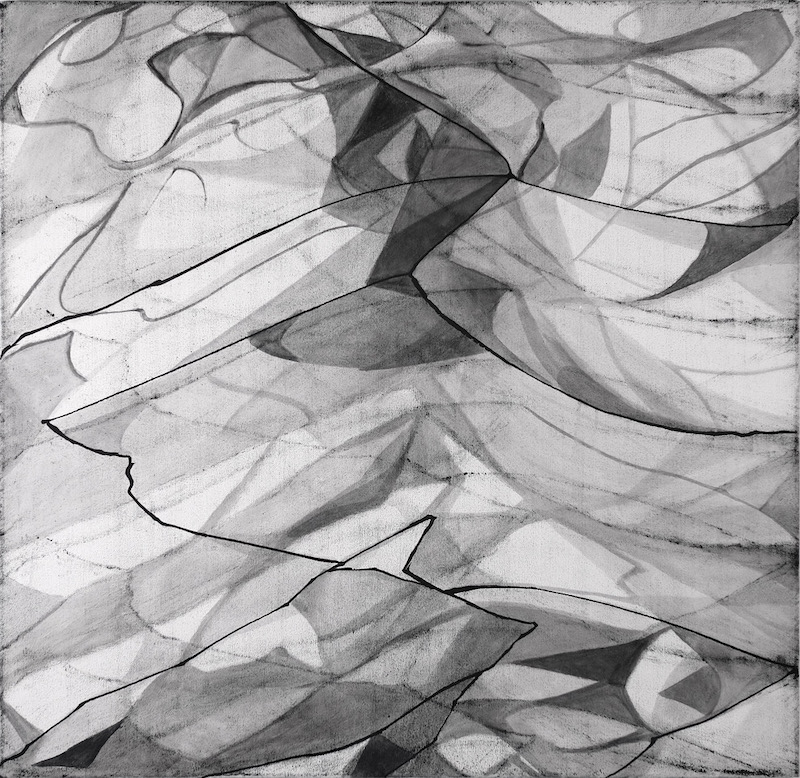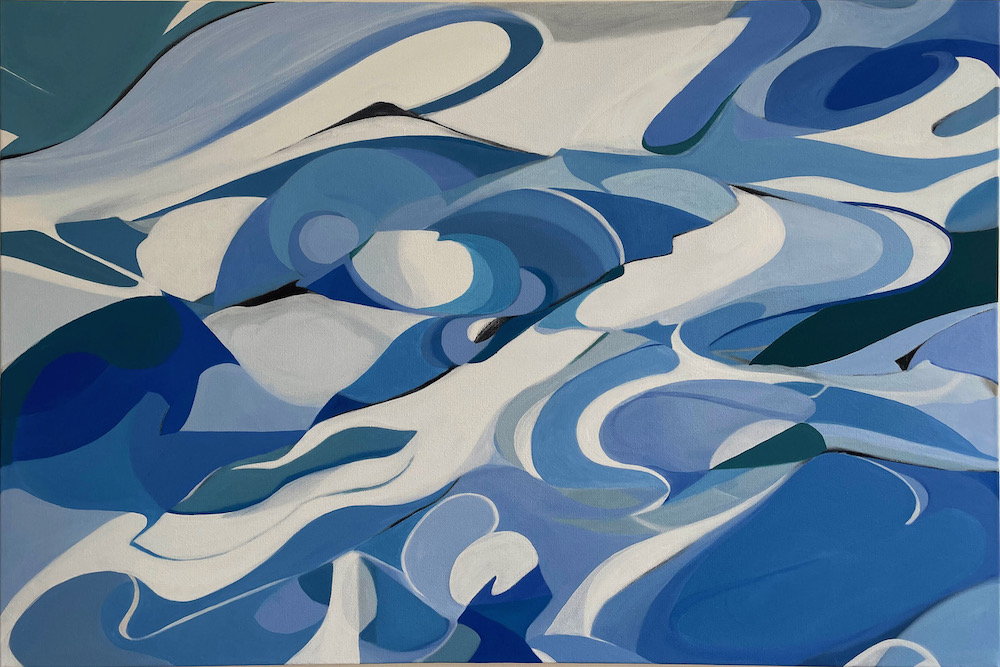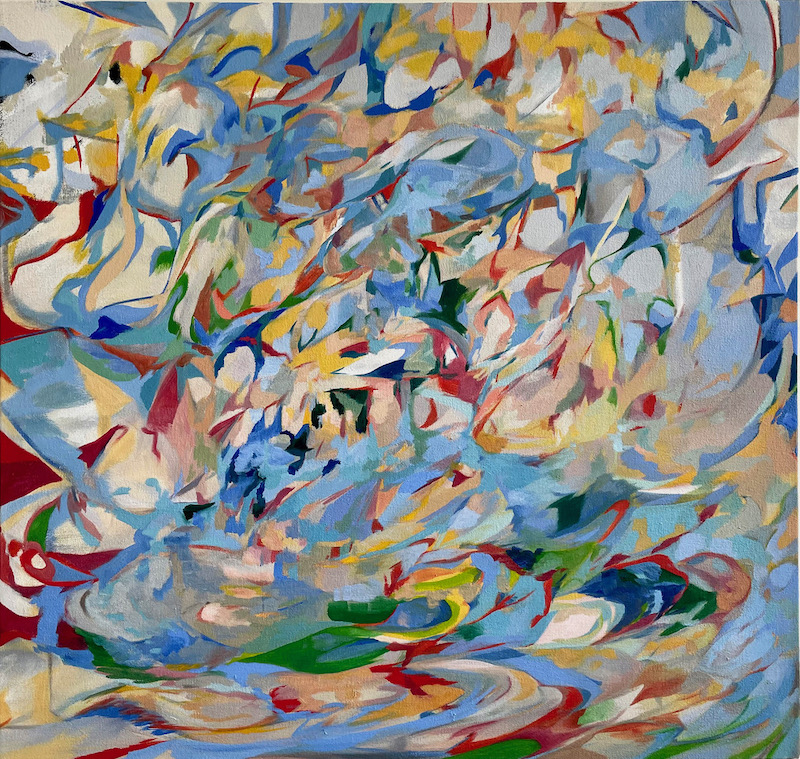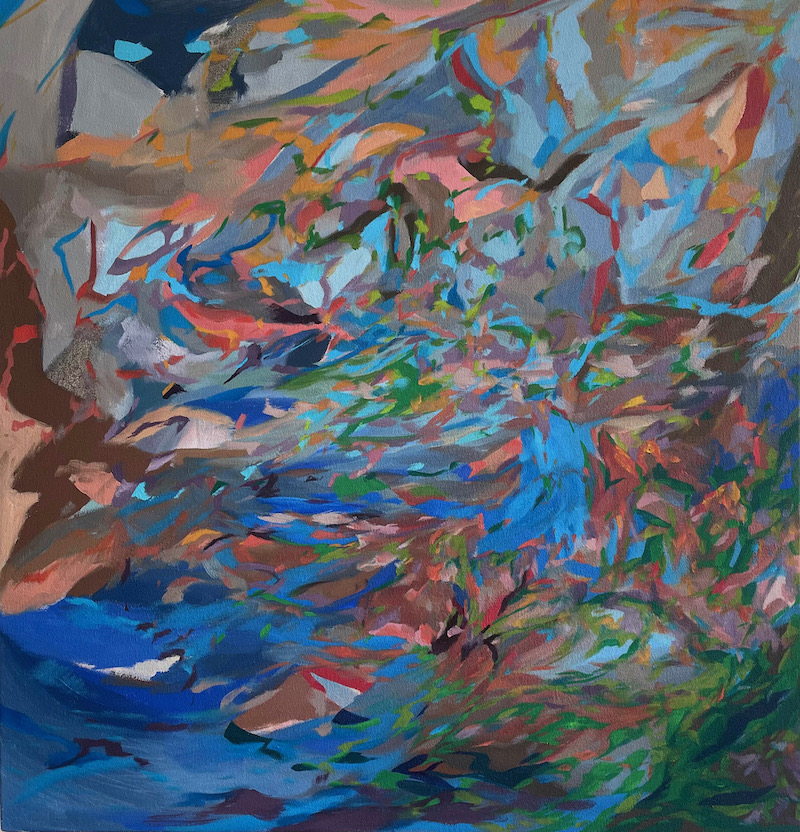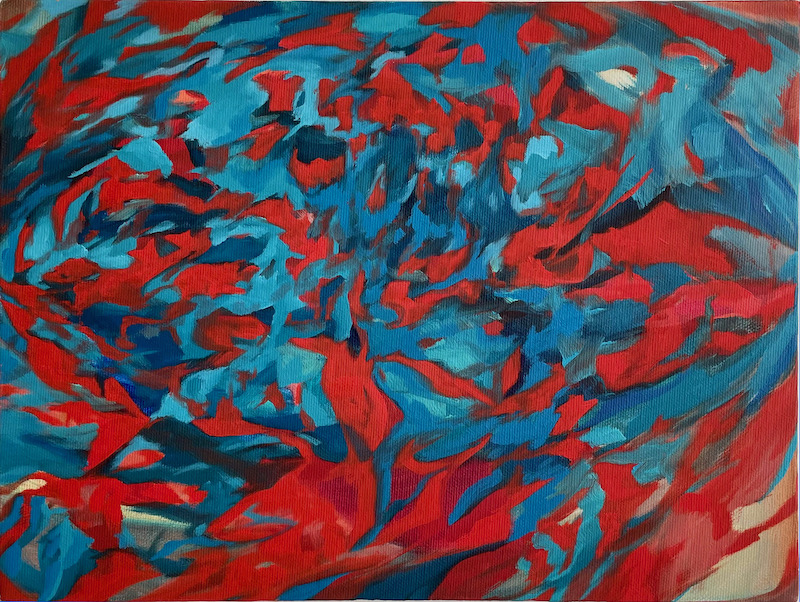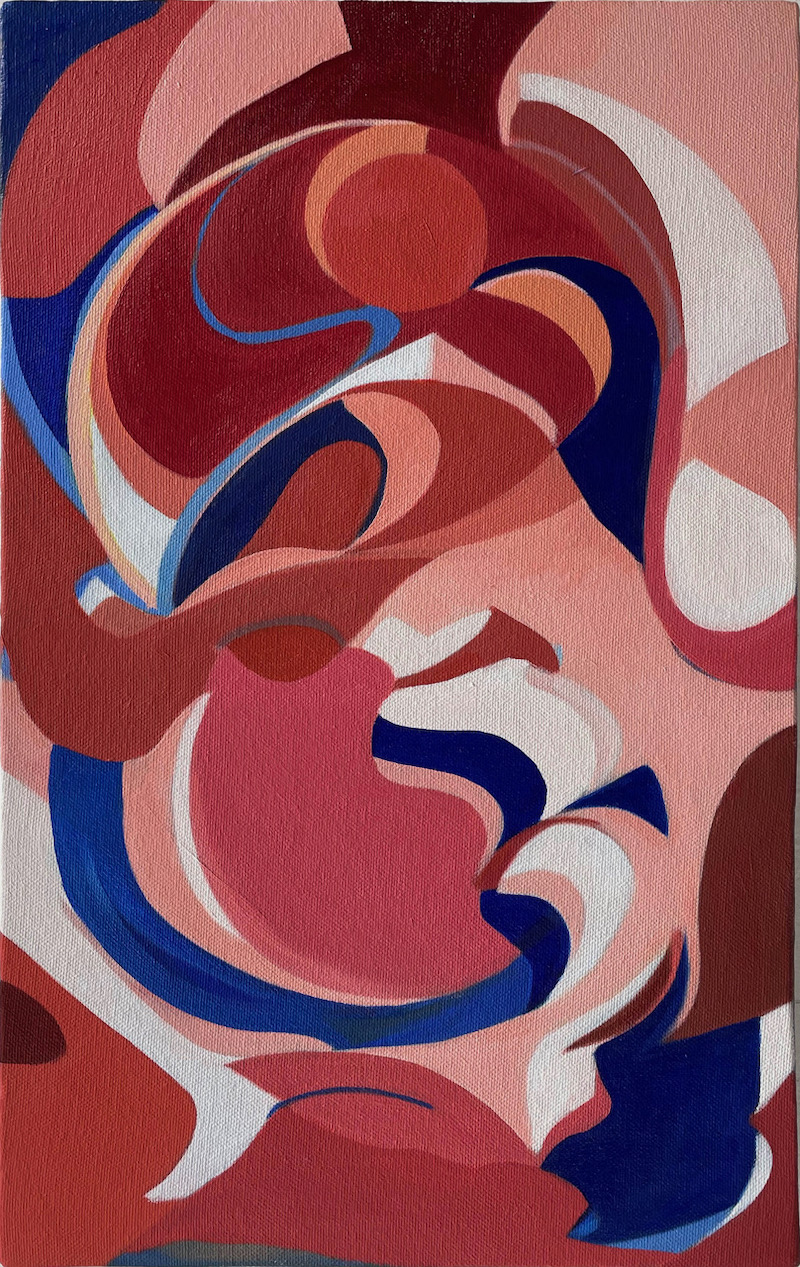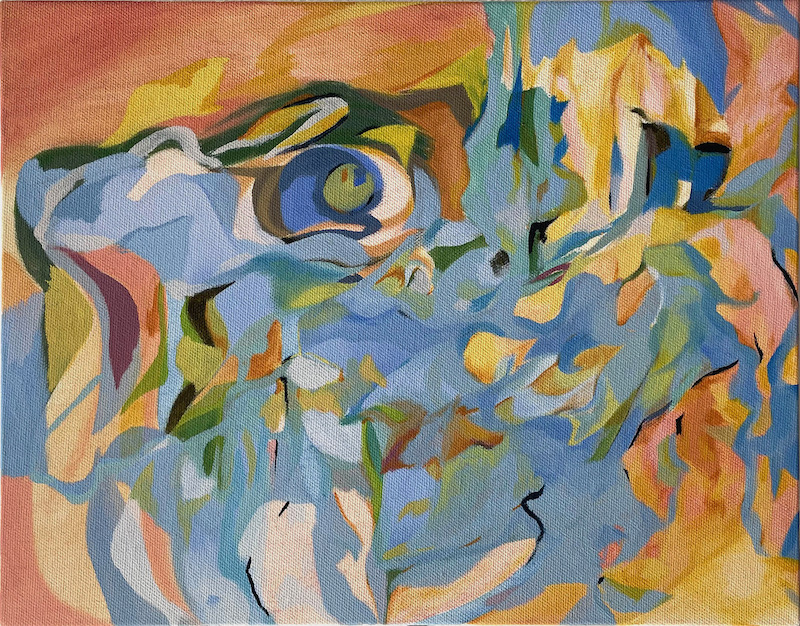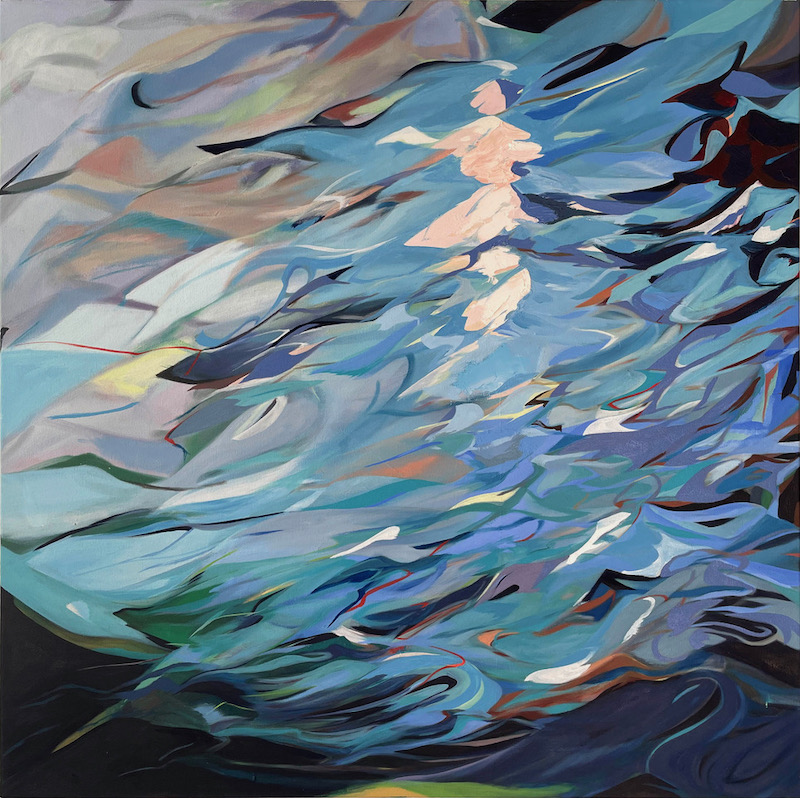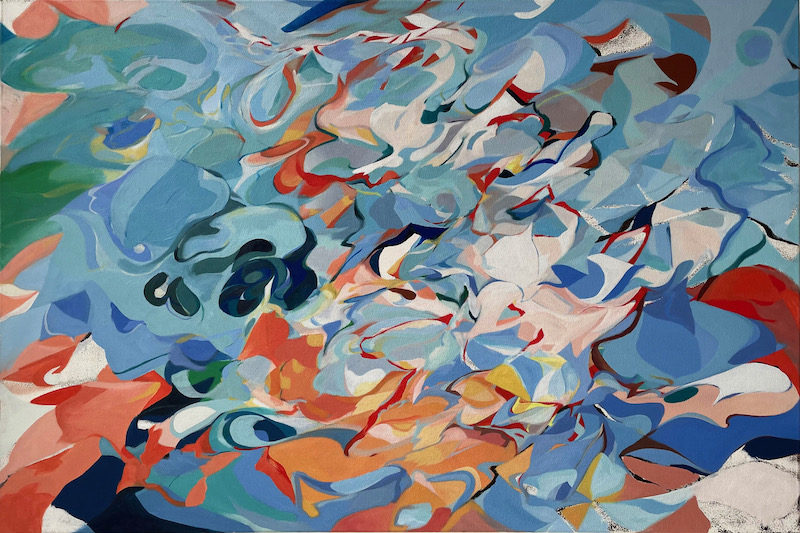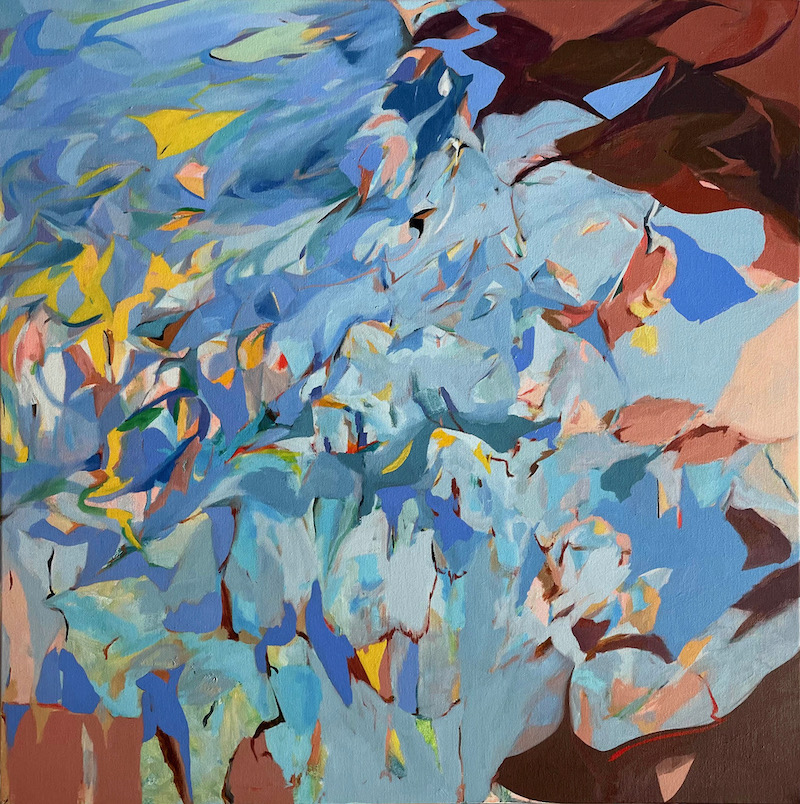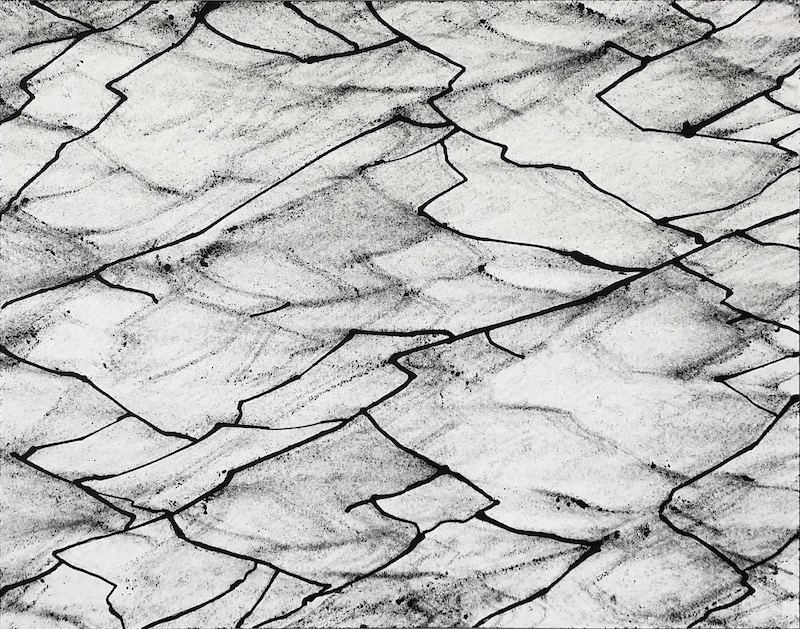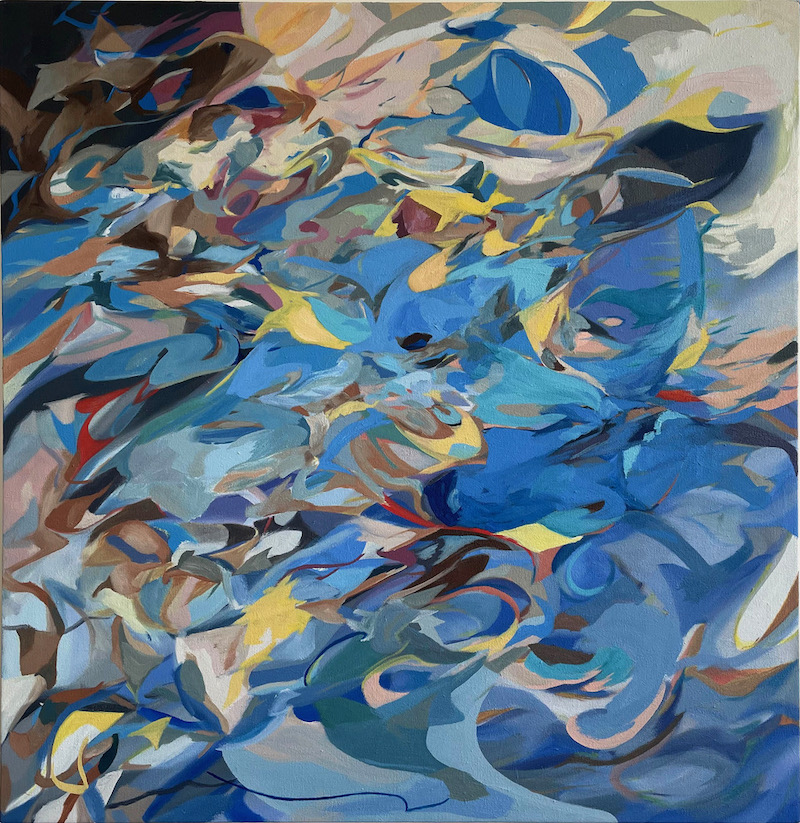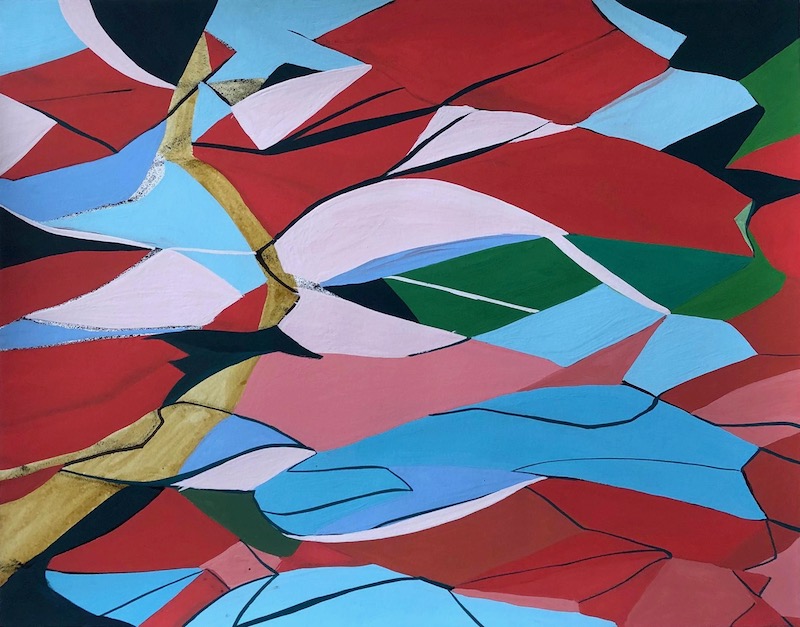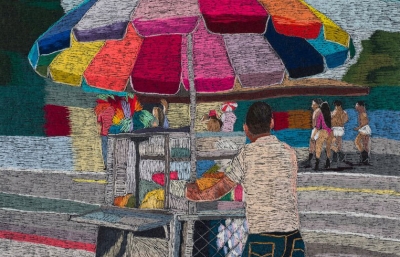Rachel Dwan exhibits twelve paintings at a pop-up exhibition at Upper Market Gallery this Friday and Saturday, September 22 to 23. Dwan’s work pursues the associative nature of abstraction in painting. She’s interested in how inspiration can flicker in the corner of your eye and compel a pursuit of unintended possibilities; both in the handling of brush work and color choices. She isn’t rendering figurative elements exactly, but landscape and water elements in particular seem to exhale and reverberate from her imaginative process. How the paintings are made, and the viewer’s reaction to them, are ultimately derived from the effort to replace intentionality with chance and the unyoking of expectations and things already known to her. This is the exhibition’s unifying motif.
Part of Dwan’s process is to explore prompts that launch these possibilities. The title of the exhibition “Rhymes With” is a game she plays with her husband Salman, which invites fresh catalysts for storytelling. First selecting a word, then asking her partner to choose a word that rhymes with the first, thereafter using that second word as the associative storytelling launch pad. This abandonment of conventionality is analogous to what she seeks in her painting practice; asserting that painting can result from a similar unintentional spark from the periphery of her own experience.
Dwan is a gestural painter conveying emotion she brings to the canvas through her latent experiences activated by this rhyming paradigm. She’s working in the threshold of different spaces, which are the product of chance, purposely inviting intuition and happenstance. A peripheral vantage point, the scurrying of imagery that is just outside of the painter’s conscious viewpoint, can’t be controlled because it is so fleeting. Thus, limitless in discomfort and unfamiliarity, it carves new paths previously molded by expectation thereby creating fresh concepts unique to individual spirit and experience. The viewer, as a result, is encouraged through the artist’s gestural practice and layered non-structural forms to likewise drift within unexpected associations. 
Some of the works seem inspired by the fluidity of water; others seem anchored to traditional landscapes. This work is a departure from her earlier painting practice that primarily worked with black and white colors embedded within repeating minimal lines (an example of which is in the show, “Water Has No Other Edge” (ink on paper, 11 x 14 inches, 2020)). There is an expansion and contraction in the architecture of these antecedent works; they suggest movement and rely heavily on what looks like erasure marks and blurred graphite smears to achieve movement within what feels like a musical modality.
Not surprising, the new paintings suggest a formal scaffolding beneath the fluid surface the viewer sees. Many were abandoned outtakes from that earlier minimal practice, hence they retain, implanted within them, the building blocks that keep these works from being unstable or too loose. One can say that where the previous body of work relied on sound as a primary influence, the current work relies on the movement of liquid with structural echoes of the earlier canvases. That these two impulses are related goes without saying. Additionally, there is a playful fusing of words in the titles of the paintings; two words are typically hyphenated, like “Flick-Sway,” “Curl-Snick,” and “Slip-Stir,” many of which reinforce the theme of fluidity.
In “Sun-Low” (oil on canvas, 30 x 30 inches, 2023), which has a decidedly landscape quality, the frame of reference suggests looking through the overhanging branches of a tree or through some dense foliage to observe an open area; likely a body of water, or even an undulating meadow. The corners of the painting are darkened in the foreground, making way for the complex rendering of the emerging and dynamic field a plein air artist might capture. In “Blue-Ken” (oil on canvas, 24 x 36 inches, 2023) Dwan has preserved larger proportions of color fields (here primarily blue and white). This choice creates a contrast to the prevalent trend of intricate, frenetic brushwork in most of the artworks; serving to recalibrate the viewer's gaze.
Dwan’s paintings serve a generative role for the viewer; they spark disparate thoughts and offer liberating possibilities. They curve and flutter ever so, and within the fragmentation, one encounters both nonobjective forms and the ever-present tendency to equate toward figurative elements. Dwan isn’t looking for a determinate reading of the paintings as much as wanting to lead or invite the viewer somewhere else. Even when Dwan’s rhyme prompt is figurative, the resulting impact on her canvas needn’t be. She searches for an association or dissociation, in the way adjectives differ from nouns. The emotional quality is paramount to strict object depiction.
Dwan exhibits a few smaller works which are equally engaging. They appear to blossom from the same tree, yet stand as outliers, to the sensibilities of the larger paintings. One gouache, “Zagflash” (gouache on paper, 11 x 14 inches, 2020), despite its smaller size, manages to offer larger color blocks within hard edge lines that create a multicolored design. In “Pin-King” (oil on canvas, 9 x 12 inches, 2023) there is a fluidity that maintains constant movement; a figure eight pattern keeps the viewer's eye from indefinitely resting anywhere. Remains of the underpainting are left along the edges of the pattern shapes; completing the reference to a mid-century aesthetic. Some of these smaller works include elements that recall circular shapes akin to eyes or round bead shapes, propelling further introspection. A psychedelic quality, even a kaleidoscope, comes to mind. Both pieces exemplify Dwan’s preference for blue and red colors. 
In a couple of works, Dwan uses Jean-Baptiste-Camille Corot’s “The Boatman of Mortefontaine,” painted in the late 1860s, as the starting reference point. By utilizing successive brushwork, she overwhelms whatever imagery she originally derived from his painting. Yet, in one of the paintings, “Flick-Sway” (oil on canvas, 25 x 24 inches, 2023), it could be argued that Dwan manages to keep some of the figurative elements of the original intact; visible only to the most discerning viewer. The second painting, “Sleek-Skip” (oil on canvas, 36 x 36 inches, 2023), appears to lose the thematic thread. Yet despite the seemingly divergent paths it becomes apparent how close Dwan gets to the original. If Corot’s painting renders atmosphere as much as it does the park at Mortefontaine, Dwan’s two paintings evoke the pertinent feelings present.
There is simultaneously a surrendering by the artist, a choiceless act where the viewer’s subjectivity outweighs any control the artist may have. Dwan is fully aware that viewers will see her paintings as they wish. This is not only a naturally occurring consequence of individuality, but an encouraged exploration of thought patterns uncommonly exercised; a rebellion to the confines of the nurturing we experience as humans. —Kelly Jean Egan and Matt Gonzalez
Dwan’s studio in the Outer Mission, at Francisco Studios on San Jose Avenue, has good west-facing light and a garden abutting the row of studio windows that are her main source of sunlight. Filled with foliage, such as jasmine bushes and overgrown peach trees, it’s natural that Dwan finds aesthetic inspiration here. A California native, Dwan studied architectural design at Stanford University and art at the Art Students League in New York City. She has completed residencies at the Wassaic Residency Program in Wassaic, NY and the School of Visual Arts Summer Residency in New York City. This is her first gallery solo exhibition.

